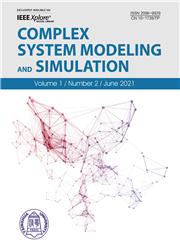Modeling and Analysis of Risk Propagation and Loss Causing Capacity for Key Nodes in Cyber-Physical Coupled Power Network
引用次数: 0
Abstract
The modern power system has evolved into a cyber-physical system with deep coupling of physical and information domains, which brings new security risks. Aiming at the problem that the “information-physical” cross-domain attacks with key nodes as springboards seriously threaten the safe and stable operation of power grids, a risk propagation model considering key nodes of power communication coupling networks is proposed to study the risk propagation characteristics of malicious attacks on key nodes and the impact on the system. First, combined with the complex network theory, a topological model of the power communication coupling network is established, and the key nodes of the coupling network are screened out by Technique for Order Preference by Similarity to Ideal Solution (TOPSIS) method under the comprehensive evaluation index based on topological characteristics and physical characteristics. Second, a risk propagation model is established for malicious attacks on key nodes to study its propagation characteristics and analyze the state changes of each node in the coupled network. Then, two loss-causing factors: the minimum load loss ratio and transmission delay factor are constructed to quantify the impact of risk propagation on the coupled network. Finally, simulation analysis based on the IEEE 39-node system shows that the probability of node being breached网络-物理耦合电力网络中关键节点的风险传播和损失容量建模与分析
现代电力系统已演变为物理域和信息域深度耦合的网络物理系统,这带来了新的安全风险。针对以关键节点为跳板的 "信息-物理 "跨域攻击严重威胁电网安全稳定运行的问题,提出一种考虑电力通信耦合网络关键节点的风险传播模型,研究关键节点遭受恶意攻击的风险传播特征及其对系统的影响。首先,结合复杂网络理论,建立电力通信耦合网络的拓扑模型,在基于拓扑特征和物理特征的综合评价指标下,采用与理想解相似度排序优选法(TOPSIS)筛选出耦合网络的关键节点。其次,建立关键节点遭受恶意攻击的风险传播模型,研究其传播特征,分析耦合网络中各节点的状态变化。然后,构建了两个致损因子:最小负载损耗率和传输延迟因子,以量化风险传播对耦合网络的影响。最后,基于 IEEE 39 节点系统的仿真分析表明,节点被攻破的概率 $(α)$ 和系统的安全容忍度 $(β)$ 是影响耦合网络风险传播特性的关键因素,同时节点的临界度与致损因子呈正相关。所提出的方法模型可以从宏观上对控制系统的安全风险扩散进行有效的探索。
本文章由计算机程序翻译,如有差异,请以英文原文为准。
求助全文
约1分钟内获得全文
求助全文

 求助内容:
求助内容: 应助结果提醒方式:
应助结果提醒方式:


